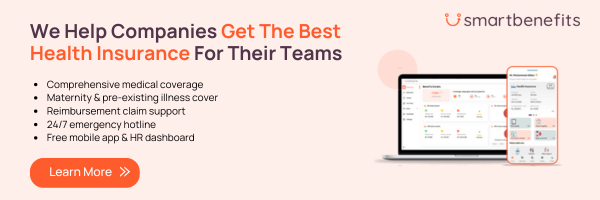Digital health insurance has been slowly taking root in Pakistan. It hasn’t expanded as quickly as digital banking or online shopping, but the direction is clear. As more people use mobile wallets, online doctor consultations, and app-based services, it was only a matter of time before life insurance started shifting in the same direction.
Employers have also begun paying closer attention because digital tools reduce paperwork and reduce many of the administrative headaches HR teams face during claims season.
The Rise of Online Enrollment and Policy Management
Many companies now prefer collecting employee details via digital forms rather than through cumbersome physical forms. Employees can log into a portal, view their benefits, and check their coverage limits without calling HR every time.
This is especially useful for businesses that have high staff turnover or deal with large teams spread across multiple locations. With digital records, updates happen faster, and there is less confusion at the time of claims.
Telemedicine Becomes a Core Part of Health Plans
Since the pandemic, most people are now comfortable speaking to a doctor on their phone. This shift helps reduce unnecessary visits to clinics, saves time for employees, and encourages early medical intervention.
Insurers have started bundling telemedicine with group health plans. For smaller companies that cannot afford large coverage amounts, telemedicine offers a low-cost way to give employees quick access to medical advice.
Digital Payments Support New Premium Models
The rapid growth of mobile wallets and online payment systems has made premium collection smoother. Individuals buying retail health plans no longer need to visit branches or deposit cash. Employers also benefit, as renewals are less likely to be delayed due to payment processing issues.
Some insurers have even started experimenting with monthly premium plans because digital billing is easier to automate. This would have been difficult a few years ago when everything relied heavily on manual deposits and physical receipts.
Major Challenges Slowing Down Digital Adoption
Even though digital health insurance is gaining ground, some challenges are slowing it down:
Lack of Awareness and Comfort With Digital Tools
Many employees have a problem with navigating insurance apps or understanding what features are available. Many workers turn to HR to interpret basic terms like coverage limits, exclusions, or pre-authorization requirements.
If an app feels complicated or if the explanation isn’t clear, employees quickly abandon the digital route. This is why awareness remains one of the strongest barriers to wider adoption.
Uneven Access to Smartphones and the Internet
Another practical issue is internet availability. While major cities like Karachi, Lahore, and Islamabad adapt quickly, many smaller towns and industrial zones struggle with inconsistent connectivity. If an employee cannot upload a claim document or open the insurer’s portal, they fall back on paper-based processes.
This partially defeats the purpose of digitization and increases the workload for HR teams who end up submitting claims on behalf of employees using shared office devices.
Concerns About Data Privacy and Medical Information
Many people are reluctant to store their medical information online because they are unsure how insurers store, protect, or use that data. Employers often raise similar questions, especially when sensitive medical details are involved.
For digital adoption to grow, insurers will need to communicate more clearly about data security and offer transparency on privacy practices. Without that, trust will take longer to build.
Hospital and Insurer Systems Not Fully Integrated
One of the biggest challenges right now is the inconsistent integration between hospitals and insurers. Ideally, a patient should be able to show a digital card or QR code and receive treatment without delay. While some large hospitals now support digital verification, many still rely on manual phone calls to confirm coverage.
If the hospital’s system fails or cannot access the insurer’s portal at the time of admission, the patient may need to pay out of pocket and claim later. Experiences like these slow down people’s willingness to rely on digital tools.
How Digital Tools Are Changing HR and Benefit Strategies
The availability of digital tools help insurers and HR departments save on administrative expenses.
Cost Efficiencies Through Digital Processes
Automated claim approvals, digital ID cards, and telemedicine can gradually bring down operational costs. Over time, these efficiencies can translate into better pricing for employers, provided claims remain stable.
Better Data for Employers and HR Teams
Digital dashboards have become valuable for companies trying to understand employee health trends. HR teams can now track which hospitals employees visit most, which illnesses are common, and how often claims occur.
This type of analysis helps employers plan better wellness activities and negotiate more effectively with insurers. Visit our blog Bringing Group Health Insurance to the Informal Sector: Challenges and Opportunities in Pakistan for a deeper insight into how employers can design smarter, more inclusive benefits.
The Road Ahead for Digital Health Insurance
Digital health insurance in Pakistan can solve several long-standing issues in the healthcare system. But the transformation will depend on how well insurers communicate with users.
Employees are becoming more comfortable with digital tools, especially with tangible benefits like shorter waiting times, easier claim submissions, and convenient virtual consultations. As insurance apps become more user-friendly and partnerships with hospitals are strengthened, adoption is likely to speed up.
Digital coverage is unlikely to replace traditional systems anytime soon, but it is gradually becoming the preferred choice for companies and employees looking for convenience, clarity, and speed.

Sadia Zaheer holds a Masters in Business Administration from IBA, Karachi. After working in several financial institutions in Client Management, Corporate Lending, Islamic Banking and Product Management she jumped careers to pursue a career in writing.
She is a Finance, Business and HR Development writer with four years of experience. She reads a lot and takes care of her multiple cats to remain calm.




